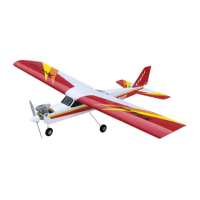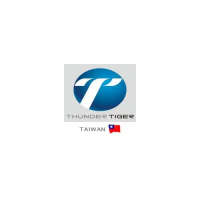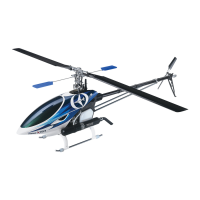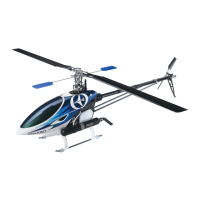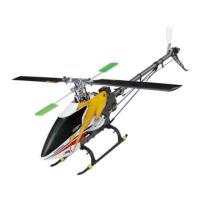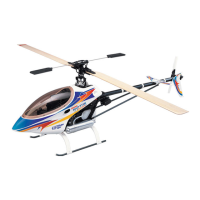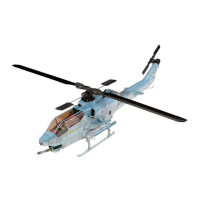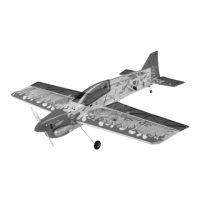12
the required control movements to get the plane back on the correct
flight path. If you run out of time or flying space and realize the plane
is going to hit something (ground, tree, etc), pull the throttle back to
idle and pull the elevator stick back about half way.This will reduce
the speed of the plane and minimize the damage sustained.
When you are ready to land, do a couple of slow fly-bys at a safe
altitude to get familiar with the plane’s slow-flying characteristics. An
important factor to remember here is that you should regulate your
altitude with the throttle not the elevator as you might expect.Practice
raising the nose of the plane slightly with a touch of “up” elevator and
then using the throttle to regulate the plane’s altitude.When you are
ready to land,fly downwind past the runway.When the plane is a hun-
dred yards or so downwind, reduce the throttle to almost an idle and
turn 90 degrees towards the runway. Fly straight for a second or two
until the plane is almost even with the runway.Turn 90 degrees again
and fly directly toward the runway using the throttle to govern how
quickly the plane is descending. Keep the nose of plane up slightly
with the elevator and allow the plane to fly gently onto the runway.
Do not try to stretch the glide path without increasing the throttle or
the plane may stall.
VII. POST-FLIGHT
Turn off all switches and if you are done for the day, de-fuel the
tank. Clean-up your plane with some spray cleaner (such as 409) and
paper towels. While you are cleaning the plane up, inspect it for dam-
age...check the prop for dings or chips. Spray some WD40 on and in
the engine for protection.
If you want, you can disassemble your airplane for easy trans-
portation. Disassembly is as simple as assembly. You can remove the
landing gear, break the wing down in two pieces, and remove the tail.
Just make sure you don’t lose any of the hardware, especially the spe-
cial thumb screws.
When you get home, ALWAYS charge your batteries overnight,
even if you only flew once.
VIII. SAFETY PRECAUTIONS
1. Wear safety glasses when starting and running all model engines.
2. Model engine fuel is very flammable and the flame is very dan-
gerous because it is almost invisible! Do not smoke or allow
sparks, high heat or other flames near the fuel.
3. Do not run model engines inside a garage or other closed room
as they give off large amounts of deadly carbon monoxide gas.
4. Do not run model engines around gravel, sand or other loose
debris.These materials will be ingested through the carburetor
and can also be kicked up by the prop.
5. Always stay behind the propeller when the engine is running.
Make all engine adjustments from behind the engine. Under no
circumstances should you allow your face or body near the
plane on rotation of the propeller when the engine is running.
6. Do not allow loose clothing or other loose objects close to the
prop.
7. To stop an engine, cut off the fuel or air supply to the engine.
Do not throw rags or other objects into the prop to stop the
engine.
8. Do not touch the engine or muffler during or right after it has
been running–It gets very hot!
IX. REPAIR
In the event of a minor mishap, the MKII usually can be repaired.
Begin by completely cleaning the area being repaired with alcohol to
remove any oil residue.
• Balsa components can be glued back together with CA glue.
• If you need to repair around the firewall/engine area, use epoxy.
• The plastic parts can be taped back together, deleted,or rebuilt out
of balsa.
• Use Carl Goldberg Models’ Ultracote® to patch the covering film.

